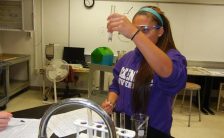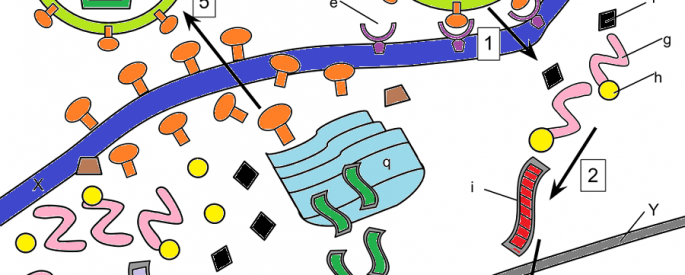Category: Cell Biology
-

Investigation: Enzymes Activity with Catalase
Have you ever noticed that when you pour hydrogen peroxide on a wound, it bubbles? The reason is that bacteria and your own tissue contains an enzyme that breaks down the peroxide. Peroxide splits into a molecule of water and a molecule of oxygen, which causes the bubbles. In a series of tests, students observe…
-

Case Study: How Do Bacteria Become Resistant?
Students analyze data regarding methicillin and penicillin resistant bacteria, focusing how hospitals inadvertently drive the evolution of resistant strains. Each section of the case explores an aspect of dealing with bacteria, including sanitation, analyzing agar plates uses the Kirby-Bauer disk method and concludes with students suggesting plans for reducing the incidence of MRSA in hospitals. With…
-

Investigation: What Are the Different Types of Cells?
Students look at cells from different domains and kingdoms; compare the size of cells and how their structure and shape differ depending on their function.
-

Case Study – Chicago Cyanide Murders
Students investigate how cyanide interferes with the mitochondria and the role of oxygen in cellulular respiration; based on an historical event.
-

Label the Parts of the Plant and Animal Cell
Label a diagram of an animal cell and a plant cell; a diagram showing how proteins are produced by ribosomes, and finally packaged by the golgi apparatus.
-

Color a Plant Cell and Identify Functions
Students learn the structures found in a plant cell by coloring them according to directions.
-

Color a Typical Animal Cell
This worksheet requires students to color a drawing of animal cell according to directions, intended as practice or reinforcement for a unit on cell biology.
-

Case Study – Cystic Fibrosis
This case study explores the relationship between the cell membrane and breathing difficulties that occur as a result of the genetic disorder cystic fibrosis.
-

Investigation: Modeling Diffusion
This inquiry investigation requires students to cut agar into 3 shapes (small, medium, large) and compare the rates of diffusion.
-

Comparing Plant Cells
Students observe onion cells and elodea cells using the light microscope. Students compare structures found in each type of cell and create drawings.
-

Observing Human Cheek Cells with a Microscope
In this lab, students use a toothpick to get a sample of cells from the insides of their cheek, stained with methylene blue.
-

Resources for Teaching and Modeling Mitosis
Teaching resources to help students understand the process of mitosis. Use models and internet simulations to illustrate the process.
-

How to View Cheek Cells with a Microscope
Simple activity for observing cells. Use methylene blue and toothpicks to gently scrape cells from the inside of a cheek and view under a microscope.



